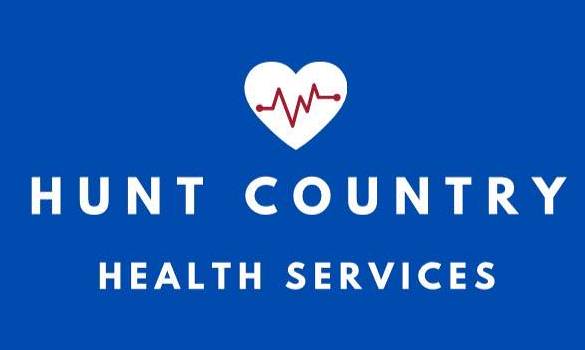Infant & Child Safety
Keep your home safe for babies and children. Share this checklist with anyone who cares for your child. Keep emergency phone numbers, such as doctor, fire department, poison control (1-800-222-1222) and 911, close to the phone. Teach your older children how and when to call 911 or other emergency phone numbers.
Watch Your Child Closely
Never leave your baby or young child alone:
- at home,
- in a bathtub,
- in a car, even when your child is sleeping,
- on a raised surface such as a bed, changing table or sofa
- Do not leave your baby or young child alone with other children or pets.
Safety with Baby Care
- Do not let anyone drink hot liquids or smoke while holding your baby.
- Place your baby on his or her back every time to sleep.
- Do not lay your baby on a waterbed, pillow or other soft surface that could suffocate him or her.
- Never prop a bottle during a feeding.
Clothing Safety
- Remove drawstrings in clothing.
- Use flame retardant sleepers and pajamas.
- Do not put necklaces, rings or bracelets on babies.
- Never tie a ribbon or cord around your baby’s neck to hold a pacifier.
Nursery and Equipment Safety
- Buy baby furniture with the Consumer Product Safety Commission (CPSC) or the Juvenile Products Manufacturers Association (JPMA) label.
- Choose a crib with slats no more than 2 3/8 inches apart and railing that measure 26 inches high from the mattress frame. Be sure the adjustable side rail latches securely when up.
- Choose playpens that have mesh with less than ¼ inch spaces. Make sure the material is securely attached to the top rail and bottom.
- Use a crib mattress that fits snugly.
- Never place pillows, padding, bumpers, toys or other items in your baby’s crib. Babies can suffocate on these items.
- Do not use baby walkers. Each year babies are seriously injured from falls while in walkers.
Safety in All Rooms of the House
- Put safety latches on all cabinets and drawers that contain sharp or breakable objects, chemicals or medicines.
- Put outlet covers on all electrical outlets.
- Put a baby gate at the top and bottom of all stairways.
- Cover corners and sharp edges of furniture with corner protectors.
- Keep items such as electrical cords and plants out of children’s reach.
- Put screens around fire places, hot radiators, stoves, kerosene or space heaters.
- Lock or latch windows properly. Keep blind and drapery cords wrapped and out of reach to prevent accidental hanging.
Kitchen Safety
- Keep hot drinks and foods, knives, cleaning products, plastic bags, and electrical objects out of children’s reach.
- Keep pot handles facing inward on the stove.
- Choose a high chair with a wide sturdy base and a tray table that attaches to both sides. Use the safety strap to hold your baby securely in the chair. Keep the chair away from the stove, windows and counters where unsafe items can be pulled off.
Water Safety
- Adjust the temperature on the water heater to 120 degrees Fahrenheit or less.
- Check that the bath water is warm, not hot, before putting your baby or young child in the water. Use only a small amount of water in the bathtub.
- Use a baby tub for at least the first 5 months. Then use a tub seat when your baby is able to sit without help.
- Never leave your baby or young child alone in the bathtub, hot tub or backyard pool – even for a second. If the telephone or doorbell rings, ignore it or take your child with you to answer it. Young children can drown very quickly in a small amount of water.
Medicine Safety
- Store medicines and vitamins out of children’s reach in a locked drawer or cabinet.
- Never give home remedies or medicine to your child without first checking with a doctor.
- Check with a doctor or pharmacist for the right medicine dose for your child’s age or weight.
Toy Safety
- Always buy flame resistant, washable, non-toxic toys.
- Check toys to be sure they are for the right age for your child.
- Keep small objects, balloons, and plastic bags away from your baby or young child. If objects can fit into a toilet paper roll, they are too small for your baby or young child.
- Teach your child to wear a bike helmet when using a bike, scooter, skateboard and other wheeled toys. Helmets reduce the risk of serious head injury.
Car Safety
- Always use approved child safety seats for your child’s age and weight. Place babies in a rear-facing seat until 2 years old or until they reach the highest height and weight allowed by the manufacturer – usually about 35 pounds.
- Install safety seats in the back car seat.
- Check with your local children’s hospital, health department or fire department to have someone check that the seat is in the car the right way.
- Never hold a baby or child on your lap while riding in a car or truck.
- Everyone in the car should wear a seat belt.
Fire Prevention
- Keep matches and lighters out of your child’s reach.
- Install smoke alarms on every floor of your home. Be sure to place alarms near rooms where you and your children sleep.
- Check smoke alarm batteries each month and change them every six months.
- Plan more than one escape route from each room in the house and pick a place for everyone to meet outside. Practice this plan with your children.
- Teach your child about fire safety.
Other Safety Measures
- Carbon monoxide (CO) is a colorless, odorless gas that can kill. Install a CO detector on each floor of your home. CO comes from unvented space heaters, blocked chimneys, leaking furnaces, gas water heaters, wood or gas stoves, gasoline powered equipment such as generators and car exhaust from attached garages.
- Contact your local health department to learn about lead poisoning dangers if you live in a home or use a daycare that was built before 1978. Painted toys or furniture that are older or come from another country may also have lead in them. Children under 6 years old are at the most risk for lead poisoning.
- Keep guns and other firearms out of your home. If they must be in the home, unload them and put them in a locked place. Keep the keys out of children’s reach. Store the gun in a separate place from the bullets.
- Consider taking an infant/child CPR course and first aid class.
- Teach your child how to cross the street safely.
- Put sunscreen on your child. Put a hat on babies less than 6 months old.
Talk to your children’s doctor or nurse if you have any questions or concerns about their safety.

